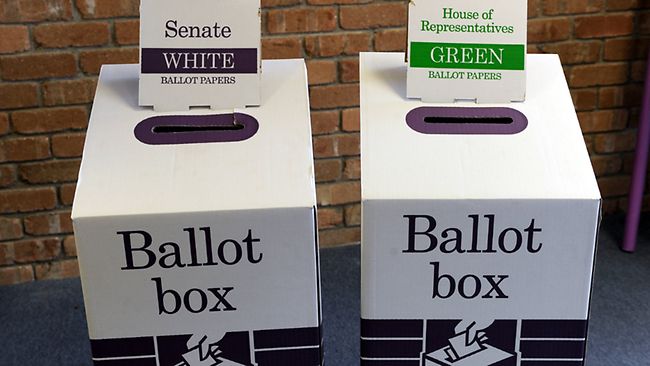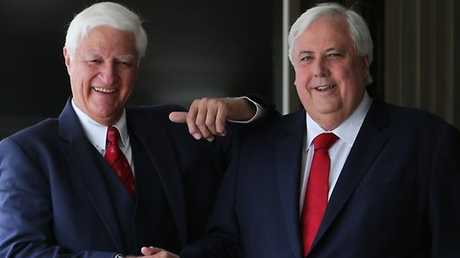
“The swinging voter is often very disengaged [and] very hard to get to.” – Former ALP campaign adviser Neil Lawrence, ABC TV’s Q&A, 1 July.
There are two parts to this statement from Neil Lawrence, the political ad man behind Kevin Rudd’s 2007 election campaign. The first is the claim that swinging voters are often disengaged from politics. The second is that they are “hard to get to” and difficult to engage politically.
Political knowledge surveys have shown that those who know the most about politics and are most interested in it, are usually partisan. Much like sports fans, they’ve picked a side, they have a stake in “the game” and an interest in following it. Swinging voters – as the name suggests – aren’t committed to a party, and are open to changing their vote from election to election.
Liberal and Labor Party internal research on swinging voters performed in the 1970s and 1980s confirms this. The parties have guarded their research more closely since then, but by analysing more recent party leaders' statements and the way the parties promote themselves (and denigrate their opponents) it seems they believe the profile of a swinging voter has barely changed.
The only thing that has changed is that swinging voters now make up a higher proportion of the electorate – possibly up to 40%, although estimates on this vary. This means they have a big impact on the outcomes of elections, particularly women swinging voters.
Back in the 1980s, Labor published an internal report on swinging voters that was quoted in Stephen Mills’ book The New Machine Men. It warned Labor members that:
“contrary to popular myth, [swinging voters] are not discerning upper middle class professionals who carefully reason their vote. They are basically ignorant and indifferent about politics. They vote on instinct for superficial, ill-informed and generally selfish reasons.”
This is not just a party view. Political scientists have looked similarly unkindly upon swinging voters, describing them as “apathetic”, “people who know little about politics and government, "care less and may well vote only to avoid the prospect of a fine”.
So being disengaged or apathetic is one of the key traits ascribed to swinging voters. Liberal Party research from 1979 found that swinging voters believe:
“there is little between the two parties. Thus ideology … is of little consequence. What is of consequence … is the way he [sic] thinks the application of an ideology will affect him personally or his family.”
All of this makes swinging voters difficult to reach using the language of conventional politics. But at least the parties used to know where these voters could be found. They were in the audiences of mass market commercial media, especially tabloid current affairs shows, tabloid newspapers and commercial news bulletins.
Now, with the fragmentation of media audiences, swinging voters are much more dispersed and difficult to reach in one place, although television remains the dominant source of news for many voters, including swinging voters.
Once the parties reach these voters, their profile and reputation has led to a conventional political wisdom that there is no point in focusing on ideology, political activism or stirring partisan rhetoric. That just turns them off. “They abhor… political involvement”, said the Labor report from 1986. Instead, the strategy has been to emphasise the middle ground, moderate policies, focus on the voter’s personal financial well-being and emphasise people they might like and relate to in the party – especially leaders if they are popular.
Verdict
Neil Lawrence’s statement that swinging voters are often disengaged and difficult for political parties to reach is correct.
Review
Dr Nick Economou, Senior Lecturer, School of Political and Social Inquiry, Monash University.
The statement that 40% of voters are “swinging” voters may overstate the rate: it is probably closer to 30%, and this varies depending on the nature of the election. We tend to find, for instance, that support for the two major parties leaps in government-changing elections.
I also believe the author generalises about “swinging voters” as generally apathetic and disengaged. Certainly there are ignorant and the apathetic voters, but swinging voters can also be rational actors who make choices based on an evaluation of what the parties are offering them. In such an environment it would be expected that voters would not be interested in politics based on ideology or philosophy, but this does not necessarily mean that such voters are disengaged.
Electoral statistics also don’t necessarily bear out the claim of disengagement made by party surveys and the anecdotes of advertisers. Participation rates in federal and state elections remain high, and variations in informal voting between elections are not great.
It could be said that high participation is due to compulsory voting but it’s worth noting that in Victorian local government elections where compulsory voting also applies, participation rates in inner-city municipalities hover around 50%. This shows that if voters don’t think the political contest is relevant to them, they won’t vote, even on the pain of a fine.
The ANU’s Australian Electoral Study now asks respondents about the media platforms they use to interact with the political process. While new media usage is increasing, television is still the primary source of political news for voters. In other words, it is still possible to get to swinging voters, despite the variety of platforms now available to them.
Author reply
I thank the reviewer for his analysis. I should point out that the research I am quoting from is not my own research or views. It has come from leaked internal political party documents. Those documents represent, unfortunately, some of the best evidence we have about swinging voters and their political attitudes because there isn’t much in the way of detailed academic research.
On the broad point the reviewer makes about participation rates at Australian elections remaining high, I’m not sure what that has to do specifically with swinging voters and I’d also suggest that looking at the percentage of registered voters who vote in Australia doesn’t quite tell us what we need to know about engagement. It masks declining registration rates for one thing (for example, the Australian Electoral Commissioner pointed out in 2009 that 1.2 million Australians were missing from the electoral roll.




